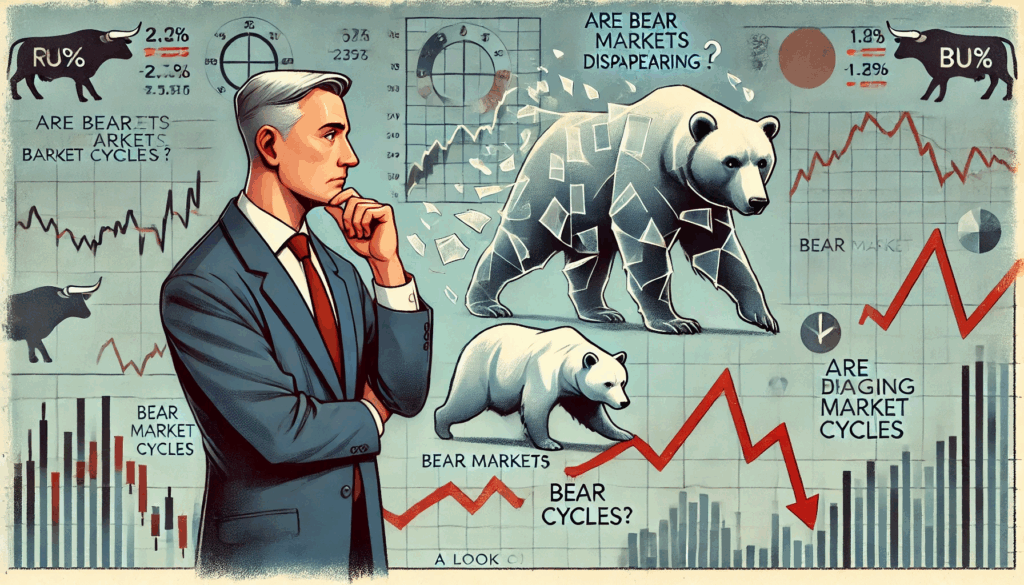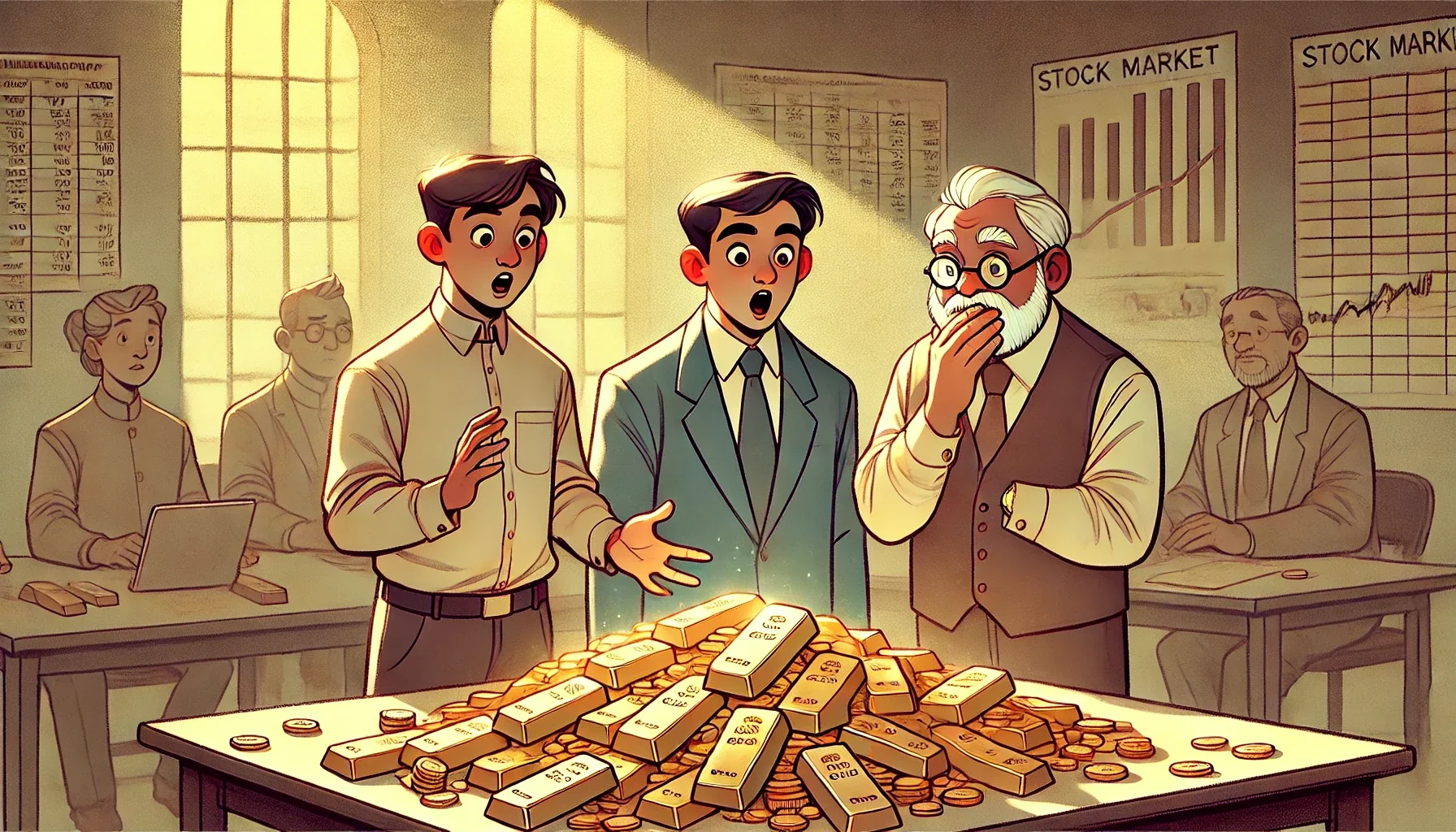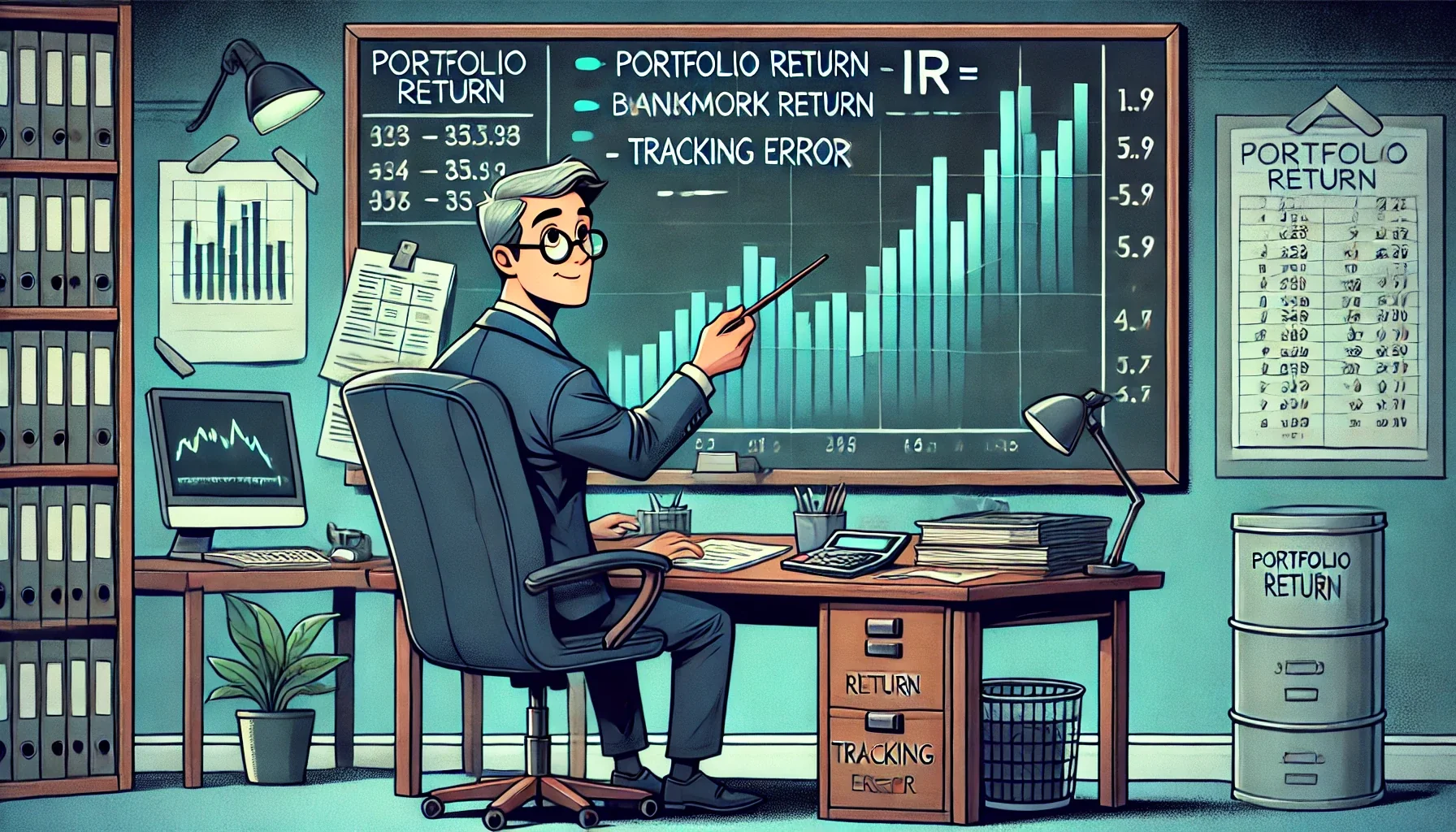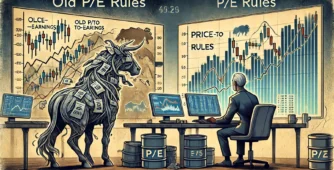Bear Market Time in Recent Decades
An intriguing data point reveals how the stock market has evolved over the decades. This information, sourced from Funds India Research, illustrates the amount of time the market has spent in bear phases across different decades. A bear market is defined as a decline of 20% or more from its peak.
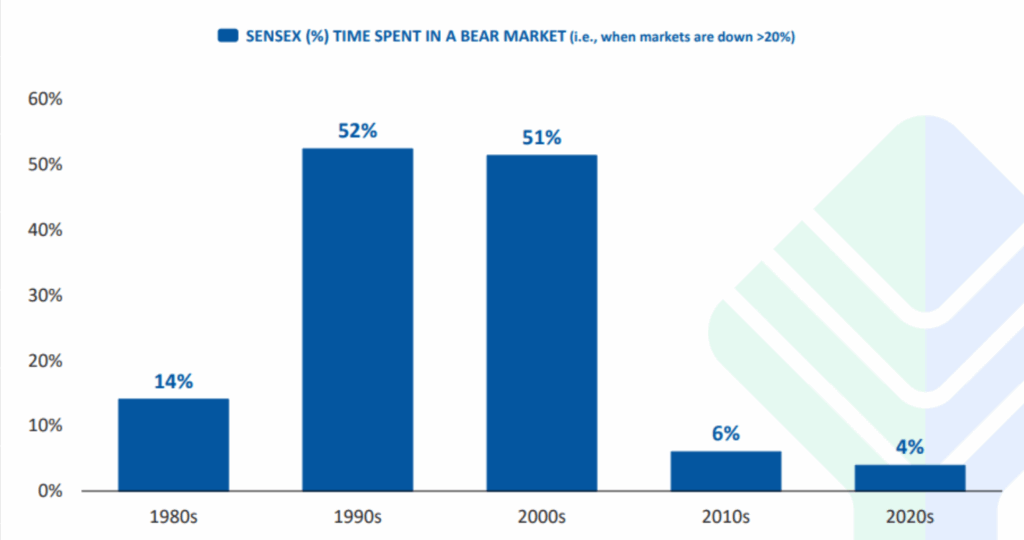
Source : Funds India Research
During the 1990s and 2000s, the market spent more than half of its time in bear phases. From 1990 to 2000, the market was in a bear phase for about 52% of the time. From 2000 to 2010, it was nearly 51% (see the image). This trend shows how common and prolonged bear markets were during those years.
A Different Story in the 1980s and 2010s
In contrast, the 1980s presented a different picture. Between 1980 and 1990, the market experienced a bear phase only 14% of the time, meaning 86% of the time was spent in a positive market. This decade was a strong and healthy period for investors.
The 2010s were even more surprising. From 2010 to 2020, the market was in a bear phase for just 6% of the time, indicating that 94% of the time, the market remained stable with positive growth.
Current Status of the 2020s
From 2020 to 2025, which marks the latest five-year period, the market has experienced a bear phase for only 4% of the time. This suggests that bear markets have almost disappeared in the last 15 years. Even significant events like the COVID crash were short-lived and did not lead to prolonged bear phases.
Why Is This Happening?
One major reason for this trend is the substantial amount of money printed by central banks globally. Whenever the market falls, liquidity is increased, and funds are injected to support the market’s recovery. This approach leads to faster increases in market levels and extended growth periods.
But is this trend beneficial? Some may argue yes, as a rising market sounds positive. However, the natural cycle of the market—experiencing declines, corrections, and subsequent growth—seems to be disrupted. This interruption may not be healthy in the long term.
Is Constant Growth Sustainable?
When there is continuous upward movement without any downturns, it raises some concerns. Though a market that only goes up might seem appealing, in reality, nothing comes without cost. If the market continues to rise for decade after decade without corrections, it may be hiding significant risks.
Do you believe bear markets are a relic of the past? Or do you think a correction is just around the corner? Share your thoughts in the comments below! Thank you for reading, and if you found this blog helpful, please SHARE it with your friends!
WeekendInvesting launches – The Momentum Podcast
This episode of THE MOMENTUM PODCAST features Manubhav, a third-generation real estate professional, sharing his unique journey navigating both worlds.
Discover:
✅ FROM PROPERTY TO PORTFOLIO: Manubhav’s transition from his family’s established real estate business to exploring equity investments.
✅ MARKET WISDOM: His candid experiences with market swings, including COVID-19’s impact on his SIPs, and lessons learned from F&O and smallcase.
✅ THE BIG COMPARISON: A fascinating look at real estate vs. equity returns, featuring real-world numbers from his family’s 40-year property investment.
✅ UNCOMMON INSIGHTS: Why gold is a family favorite and the surprising state of equity investing in smaller Indian towns.

